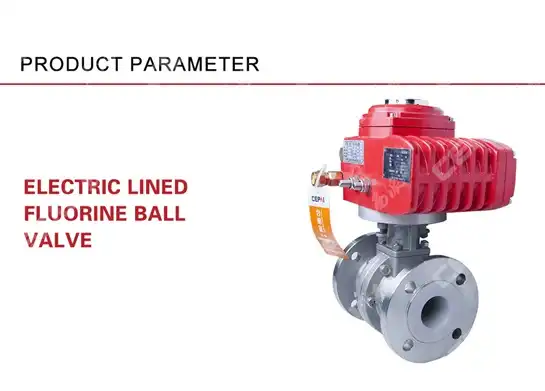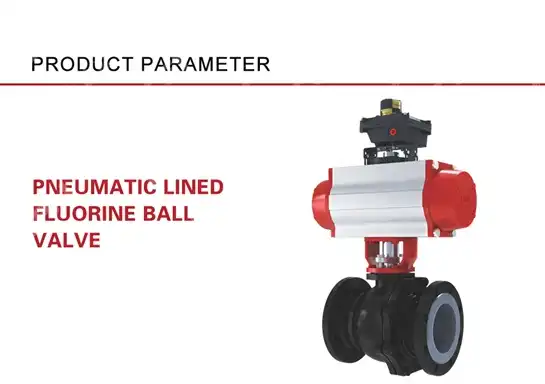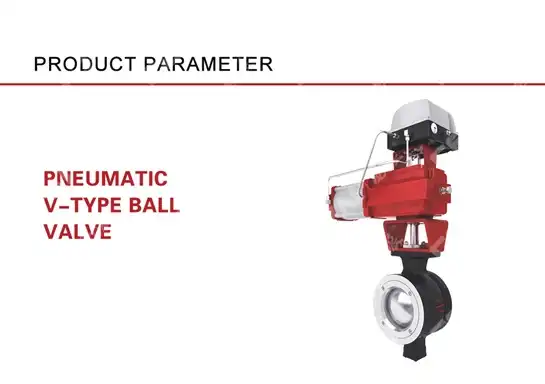Ball Valve Applications in Oil and Gas: Durability Under Pressure
Picture this: A critical production shutdown caused by valve failure at an offshore drilling platform, costing hundreds of thousands of dollars per hour. In the unforgiving environment of oil and gas operations, where extreme pressures, corrosive media, and temperature fluctuations are daily realities, equipment reliability isn't just important—it's mission-critical. Ball valves have emerged as the industry's trusted solution for flow control, offering the durability and performance needed to maintain operational integrity under the most demanding conditions. This comprehensive guide explores how advanced ball valve technology protects your operations, reduces downtime, and ensures safety in high-pressure petroleum applications.
Understanding Ball Valve Design for High-Pressure Environments
The fundamental architecture of industrial ball valves makes them exceptionally suited for oil and gas applications where pressure integrity is paramount. Unlike conventional valve designs, ball valves utilize a spherical closure element with a central bore that rotates within the valve body to control flow. This simple yet ingenious mechanism provides several critical advantages. The quarter-turn operation enables rapid shutoff when emergency situations arise, minimizing potential hazards and product loss. The full-port design in many ball valve configurations allows unrestricted flow passage, reducing pressure drops and maintaining system efficiency across upstream, midstream, and downstream operations. What truly distinguishes high-performance ball valves in petroleum service is their construction methodology and material selection. Premium ball valves incorporate forged bodies manufactured from alloy steels, stainless steels, or specialized materials that withstand corrosive hydrocarbon exposure. The sealing mechanism employs elastomeric or metal seats that maintain tight shutoff even after thousands of cycles. Advanced designs feature floating or trunnion-mounted balls, with trunnion configurations providing superior stability under high differential pressures commonly encountered in wellhead applications and pipeline systems. Fire-safe certifications ensure that even under catastrophic conditions, the ball valve maintains sealing integrity, preventing environmental disasters and protecting personnel.

-
Material Selection and Pressure Ratings
Selecting appropriate materials for ball valve components directly impacts service life and operational safety in oil and gas environments. Body materials must resist sulfide stress cracking, chloride-induced corrosion, and erosion from sand-laden production fluids. Carbon steel bodies with corrosion-resistant trim serve general hydrocarbon service, while more aggressive applications demand duplex stainless steel or nickel alloys. The ball itself typically receives hardened coatings or surface treatments to resist wear from particulate matter in crude oil and natural gas streams. Pressure rating classification follows industry standards including ANSI Class designations and API specifications tailored for petroleum service. Ball valves serving upstream drilling operations frequently require Class 2000 or higher ratings to manage wellhead pressures that can exceed 10,000 PSI. Midstream pipeline applications typically utilize Class 150 through Class 900 ratings depending on transmission pressures. Understanding the relationship between pressure rating, temperature derating, and material properties ensures proper ball valve selection that maintains safety margins throughout the equipment's operational envelope.
-
Sealing Technology and Leak Prevention
The sealing performance of ball valves in oil and gas service determines both operational efficiency and environmental compliance. Primary sealing occurs at the interface between the ball surface and valve seats, which may be soft-seated using PTFE compounds or metal-seated for high-temperature applications. Soft seats provide bubble-tight shutoff in standard conditions but may degrade when exposed to temperatures exceeding 400°F or abrasive solids. Metal-seated ball valves sacrifice some sealing tightness for extreme temperature capability and resistance to erosion, making them ideal for steam injection wells and high-temperature processing units. Secondary sealing systems protect against fugitive emissions through the valve stem. Spring-loaded packing arrangements using flexible graphite or PTFE maintain compression as the stem cycles, preventing hydrocarbon leakage to atmosphere. Advanced packing configurations incorporate live-loaded designs that automatically compensate for packing wear, reducing maintenance requirements and extending service intervals. Emission control has become increasingly critical as environmental regulations tighten, and modern ball valve designs achieve Low-E or Zero-E performance standards required by regulatory agencies worldwide.
Critical Applications Across the Oil and Gas Value Chain
Ball valves serve essential functions throughout every stage of petroleum production, processing, and distribution. In upstream drilling operations, ball valves control mud circulation systems, manage wellhead pressures, and isolate completion zones during hydraulic fracturing. These applications demand valves capable of handling abrasive drilling fluids, rapid pressure cycling, and corrosive formation waters that would quickly destroy lesser equipment. Wellhead ball valves must maintain sealing integrity through thousands of operational cycles while providing reliable emergency shutdown capability when well control situations arise. Midstream gathering and pipeline transportation systems rely heavily on ball valve technology for main line isolation, station piping, and metering applications. Large-diameter ball valves with actuators provide automated block valve service along transmission pipelines, allowing operators to isolate sections for maintenance or respond quickly to leak detection system alarms. The low-pressure drop characteristics of full-bore ball valves minimize pumping costs across long-distance pipelines carrying crude oil, refined products, or natural gas. Bidirectional sealing capability enables these valves to maintain isolation regardless of flow direction, a critical feature when pipeline flow reverses during operational mode changes.
-
Refining and Processing Operations
Downstream refining facilities incorporate thousands of ball valves throughout atmospheric and vacuum distillation units, catalytic crackers, hydrotreating processes, and product blending systems. These installations present unique challenges including high-temperature service above 500°F, exposure to hydrogen-rich environments that cause material embrittlement, and corrosive process streams containing sulfur compounds and organic acids. Specialized ball valve designs address these conditions through appropriate metallurgy, extended bonnet configurations for temperature isolation, and hard-facing treatments that resist erosion-corrosion mechanisms. Process control applications within refineries increasingly utilize characterized ball valves with modified port geometries that provide predictable flow characteristics throughout the valve's operating range. These control ball valves replace traditional globe valves in many services, offering superior shutoff, longer service life, and reduced maintenance compared to sliding stem designs. Integration with digital positioners and smart valve technologies enables condition monitoring and predictive maintenance strategies that optimize asset performance and minimize unplanned downtime.
-
Offshore Platform and Subsea Installations
Marine petroleum production environments impose additional requirements beyond conventional onshore installations. Offshore platform ball valves must resist saltwater corrosion, function reliably in confined spaces where maintenance access is limited, and maintain performance despite constant vibration from wave action and rotating equipment. Compact designs minimize weight—a critical consideration for topsides installations where structural loading affects platform capacity. Fire-safe construction becomes mandatory given the catastrophic consequences of hydrocarbon release and ignition in offshore environments. Subsea ball valves represent the pinnacle of petroleum valve engineering, operating at water depths exceeding 10,000 feet where hydrostatic pressures approach 5,000 PSI before considering internal process pressures. These specialized valves incorporate pressure-balanced designs, exotic material selections resistant to seawater corrosion and galvanic attack, and actuation systems that function reliably with subsea control systems. Ball valve manifolds at subsea wellheads control production from multiple wells, with fail-safe functionality ensuring automatic closure upon loss of control signal—protecting the environment and subsea equipment investments worth hundreds of millions of dollars.

Durability Factors and Performance Optimization
Achieving extended service life from ball valves in demanding petroleum applications requires understanding the failure mechanisms that limit durability and implementing design features that mitigate these degradation modes. Erosion represents a primary concern when handling production fluids containing sand and solid particles. Velocity limitations through the valve body and specialized trim configurations minimize erosion rates, but material selection remains crucial. Hardened trim materials, ceramic coatings, or tungsten carbide overlays significantly extend valve life in erosive services compared to standard materials. Corrosion mechanisms vary depending on the specific petroleum stream composition. Hydrogen sulfide (H2S) in sour gas production causes sulfide stress cracking in susceptible materials, requiring NACE-compliant material selection and fabrication practices for these services. Carbon dioxide (CO2) in production streams forms carbonic acid that attacks carbon steel components, necessitating corrosion-resistant alloys or protective coatings. Chloride-containing brines accelerate localized corrosion of stainless steels, making duplex grades or nickel alloys necessary for these applications.
-
Advanced Manufacturing and Quality Control
Modern ball valve manufacturing for oil and gas service incorporates precision machining, advanced heat treatment processes, and rigorous quality verification. Bodies undergo ultrasonic testing to verify material integrity and detect casting defects that could compromise pressure containment. Critical sealing surfaces receive precision grinding and lapping to achieve the finish quality necessary for reliable sealing performance. Dimensional verification using coordinate measuring machines ensures components meet tight tolerances essential for proper assembly and operation. CEPAI Group exemplifies advanced manufacturing capabilities with their investment of 156 million yuan in intelligent production systems. Their high-precision flexible manufacturing line—the longest in the Asia Pacific region—combines automated machining centers, robotic material handling, and in-process quality verification. This intelligent manufacturing approach ensures consistent production quality while enabling customization to meet specific customer requirements. Integration of industrial Internet of Things technologies provides real-time production monitoring and quality traceability from raw material receipt through final product shipment.
-
Testing and Certification Standards
Comprehensive testing validates ball valve performance before equipment enters service in critical petroleum applications. Hydrostatic shell testing verifies pressure containment at pressures typically 1.5 times the valve's rated working pressure, confirming body integrity and weld quality. Seat testing demonstrates sealing performance, with acceptance criteria defined by API standards depending on the valve's intended service. Fire testing per API 607 or API 6FA simulates catastrophic fire conditions, verifying that valves maintain sealing function even after exposure to flames exceeding 1400°F. Third-party certification provides independent verification that ball valves meet industry specifications. API 6A certification is mandatory for wellhead equipment, while API 6D covers pipeline ball valves. Quality management system certifications including ISO 9001 demonstrate manufacturer commitment to consistent processes and continuous improvement. CEPAI Group maintains comprehensive certifications including API 6A, API 6D, ISO 9001, ISO 14001, and ISO 45001, along with Safety Integrity Level (SIL) certifications for critical safety applications. These certifications provide customers confidence that ball valves meet stringent industry requirements and will perform reliably throughout their service life.
Maintenance Strategies and Lifecycle Management
Proactive maintenance programs maximize ball valve reliability and extend asset life in petroleum service. Condition monitoring techniques identify developing problems before catastrophic failures occur, enabling planned maintenance during convenient operational windows rather than emergency repairs during critical production periods. External inspection identifies corrosion, coating degradation, or mechanical damage requiring attention. Leak detection around stem seals indicates packing wear or gland bolt relaxation that can often be corrected through simple packing adjustment or replacement without removing the valve from service. Periodic disassembly and inspection provides detailed assessment of internal component condition. Seat wear, ball surface condition, and seal degradation are evaluated against acceptance criteria to determine if components require replacement or if the valve can return to service. Advanced repair techniques including hard-facing deposition and precision re-machining can restore worn components to serviceable condition at significant cost savings compared to complete valve replacement. Maintaining detailed maintenance records enables trending of component wear rates and optimization of maintenance intervals based on actual service experience.
-
Intelligent Monitoring and Predictive Maintenance
Digital technologies are transforming ball valve maintenance from reactive or time-based approaches to predictive strategies that optimize asset performance. Smart actuators with integrated diagnostics continuously monitor valve operation, detecting increases in breakout torque that indicate seat wear or contamination. Partial stroke testing of emergency shutdown valves verifies operational readiness without full closure that could disrupt production. Vibration monitoring identifies bearing wear or actuator problems before functional failures occur. CEPAI Group's remote operation and maintenance service system leverages augmented reality technology for technical support, enabling expert troubleshooting and repair guidance without requiring specialists to travel to remote field locations. This capability dramatically reduces downtime for offshore platforms and international projects where logistics challenges would otherwise delay repairs. Integration with customer asset management systems provides comprehensive valve lifecycle data supporting reliability engineering analysis and maintenance optimization across entire facilities.
Conclusion
Ball valves have proven themselves indispensable in oil and gas operations, delivering the durability, reliability, and safety performance that petroleum production demands. Their simple yet robust design, combined with advanced materials and manufacturing techniques, enables these critical flow control devices to withstand extreme pressures, corrosive environments, and demanding operational cycles. From wellhead installations to refinery process units, ball valves protect assets, ensure operational continuity, and safeguard personnel and the environment. As the industry continues advancing toward deeper wells, harsher production environments, and stricter performance requirements, innovations in ball valve technology will remain essential for meeting these evolving challenges.
Cooperate with CEPAI Group Co., LTD.
When selecting a China Ball Valve manufacturer for your critical petroleum applications, partner with CEPAI Group—a national high-tech enterprise and specialized "little giant" company recognized for exceptional quality and innovation. As a leading China Ball Valve supplier, CEPAI offers High Quality Ball Valves certified to API 6A, API 6D, and ISO standards, with Ball Valve SIL certification for safety-critical service. Our China Ball Valve factory operates Asia Pacific's longest high-precision intelligent manufacturing line, ensuring superior quality Ball Valves for sale at competitive Ball Valve prices. Whether you need standard or customized solutions, our China Ball Valve wholesale capabilities serve global markets including PetroChina, Sinopec, and CNOOC. Contact our technical team at cepai@cepai.com to discuss your specific requirements, receive expert valve selection guidance, and discover how CEPAI's advanced manufacturing capabilities and comprehensive certifications deliver exceptional value for your projects. Save this resource and reach out whenever valve challenges arise—we're committed to your operational success.
References
1. American Petroleum Institute. "Specification for Wellhead and Christmas Tree Equipment" (API Specification 6A). Washington, DC: American Petroleum Institute, 2018.
2. Nesbitt, Brian. "Handbook of Valves and Actuators: Valves Manual International." Oxford: Elsevier Science, 2007.
3. Smith, Peter and R.W. Zappe. "Valve Selection Handbook: Engineering Fundamentals for Selecting the Right Valve Design for Every Industrial Flow Application." Burlington: Gulf Professional Publishing, 2004.
4. Botros, Kamal K. and Campbell, James M. "Ball Valves in Natural Gas Transmission Applications: Performance and Design Considerations." Journal of Pressure Vessel Technology, Vol. 134, Issue 2, 2012.
_1746598568348.webp)
Get professional pre-sales technical consultation and valve selection services, customized solution services.

About CEPAI


